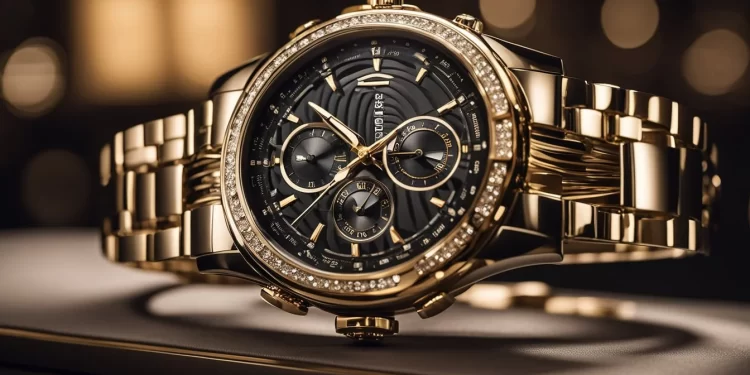The Evolution of Watch Styles: A Blend of Tradition and Modernity

Watches have evolved tremendously over the centuries, transitioning from purely functional timekeeping devices to status symbols and fashion statements. As they adapt to the changing times, watch styles have managed to balance tradition and modernity in a way that appeals to both classic enthusiasts and tech-savvy consumers. The intricate history of watchmaking is woven with stories of innovation, craftsmanship, and an ongoing quest for precision. Today, watches not only tell time but also narrate a journey through eras of elegance, utility, and style. Let’s explore how watch styles have evolved to embrace both heritage and contemporary tastes.
From Pocket Watches to Wristwatches: The Beginning
The history of modern watch styles can be traced back to the 16th century, when pocket watches were the standard for timekeeping. Carried by the elite and often adorned with intricate engravings, these early timepieces were a symbol of prestige and craftsmanship. Pocket watches were commonly designed with a protective cover and attached to a chain, making them a functional yet elegant accessory for the gentlemen of that era.
It wasn’t until World War I that wristwatches began to gain prominence. Soldiers needed a more practical way to check the time in the field, and strapping timepieces to their wrists became the solution. This innovation shifted wristwatches from being seen as a feminine accessory to a practical tool for both men and women. The transition was further popularized by luxury watchmakers who refined the design, blending functionality with aesthetics.
Today, the wristwatch has become a universal accessory, but its roots in practicality and military use remain a part of its legacy. For a modern twist on these classic origins, Cezeno offers a range of watches that pay homage to tradition while incorporating contemporary design elements.
The Rise of Quartz and the Modern Watch Revolution
The 1970s marked a significant shift in watch styles with the advent of quartz technology. Before this period, mechanical watches—driven by intricate gears and springs—dominated the market. However, the introduction of quartz movements revolutionized the industry by offering more accurate timekeeping at a fraction of the cost. Quartz watches, powered by a battery, made timepieces more accessible and affordable for the masses.
The “Quartz Crisis,” as it came to be known, was a challenging time for traditional Swiss watchmakers, who faced stiff competition from quartz-powered watches made in Japan and other parts of the world. Yet, many high-end brands adapted by creating hybrid models that combined quartz technology with luxurious designs.
This era also saw a shift in watch styles, as consumers started favoring minimalist designs with slim profiles. Brands focused on creating watches that were not only precise but also versatile enough to be worn on different occasions. Quartz technology continues to influence modern timepieces, offering a practical alternative to mechanical movements. For those looking to experience the seamless blend of precision and style, Cezeno provides a variety of options that capture the essence of both eras.
Luxury Meets Technology: The Smartwatch Era
In the 21st century, the watch industry has seen another wave of transformation with the rise of smartwatches. These high-tech gadgets offer features far beyond timekeeping, including fitness tracking, message notifications, and even mobile payments. With tech giants like Apple and Samsung leading the charge, the smartwatch has become a staple for many, especially those who value connectivity and convenience.
However, the rise of smartwatches hasn’t diminished the appeal of traditional watchmaking. Instead, it has inspired many brands to innovate further, merging classic watch styles with modern technology. Hybrid watches, for instance, combine the look of an analog watch with some of the functionalities of a smartwatch, appealing to those who appreciate the best of both worlds.
For many watch enthusiasts, smartwatches represent a new chapter in the long history of watch evolution. Yet, the timeless appeal of mechanical watches continues to thrive alongside digital innovations. In this rapidly changing market, Cezeno’s collection stands out, offering timepieces that merge classic design principles with modern functionality.
Embracing Retro Designs with a Modern Twist
Even as technology advances, there is a growing nostalgia for the vintage and retro designs of yesteryears. Watchmakers have embraced this trend by reissuing classic models with updated features. These retro-inspired watches often feature elements like oversized dials, leather straps, and bold color palettes reminiscent of past decades, but with the reliability and precision of modern engineering.
The resurgence of vintage designs appeals to those who value a sense of history in their timepieces. It’s not just about wearing a watch; it’s about wearing a piece of the past. These timepieces tell a story and add character to the wearer’s style. Whether it’s a reimagined 1960s dive watch or a sleek 1980s chronograph, vintage-inspired models have found a place in contemporary collections.
For those who appreciate this blend of the past and present, Cezeno offers a diverse range of timepieces that bring classic styles into the modern era, allowing you to wear a piece of history on your wrist.
The Future of Watchmaking: Sustainability and Innovation
Looking ahead, the evolution of watch styles is increasingly influenced by sustainability and eco-consciousness. Consumers today are more mindful of the environmental impact of their purchases, and the watch industry is responding by exploring sustainable materials like recycled metals and vegan leather straps. Solar-powered watches are another innovation, combining the precision of quartz with the environmental benefits of renewable energy.
This shift towards sustainable watchmaking doesn’t mean a departure from tradition; rather, it’s a continuation of the industry’s commitment to craftsmanship and quality. By embracing innovation, watchmakers can stay true to their heritage while meeting the demands of a modern, eco-conscious audience.
Conclusion: A Timeless Balance
The journey of watch styles from pocket watches to smartwatches is a testament to the industry’s ability to adapt and innovate. By blending tradition with modernity, watchmakers have managed to stay relevant in an ever-changing world. Whether you’re drawn to the intricate movements of a mechanical watch, the precision of quartz, or the connectivity of a smartwatch, there’s a timepiece out there that suits your needs and personality.






